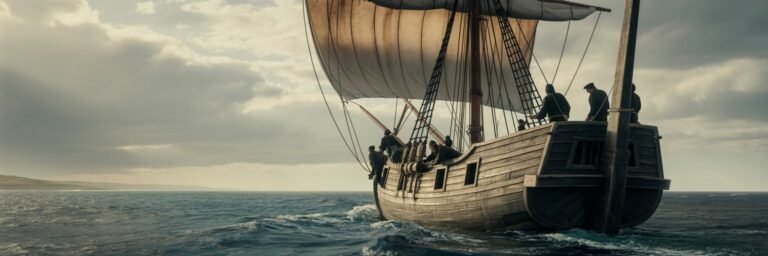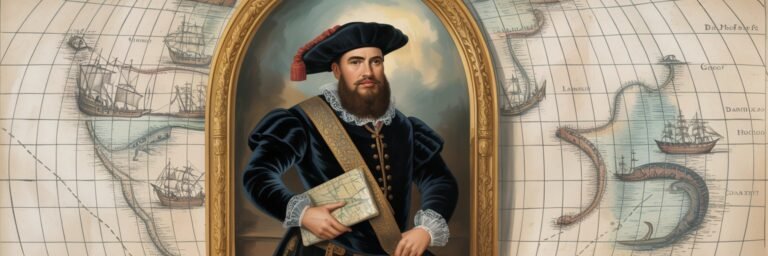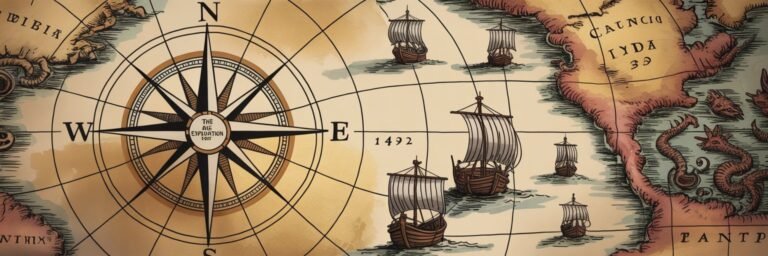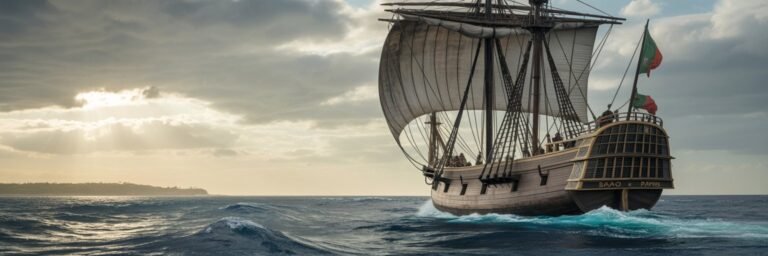INTRODUCTION
The Age of Exploration, a transformative period between the 15th and 17th centuries, witnessed unprecedented advancements in transoceanic navigation, sparked by a thirst for wealth, power, knowledge, and the propagation of religious beliefs. This era offered mankind a window into uncharted planetary expanses, altering global dynamics forever.
HISTORICAL BACKGROUND
The Age of Exploration’s genesis lay in the late Middle Ages, around the 1400s, when European nations sought alternative trade routes to the wealthy east following Constantinople’s conquest by the Ottoman Turks in 1453. The search for spices, silks, and precious metals drove sailors like Vasco da Gama, Christopher Columbus, and Ferdinand Magellan to the extremities of the known world.
Prince Henry the Navigator of Portugal, a patron of many initial expeditions, established a maritime school in Sagres, which adopted Arab sailing techniques and technologies, including the astrolabe and quadrant. It is here that Bartolomeu Dias learned the skills he applied to round the Cape of Good Hope in 1488.
In 1492, with the financial support of Spain’s Catholic Monarchs, Christopher Columbus attempted to reach Asia by sailing westward, inadvertently leading to the discovery of the Americas. His voyages opened a significant transatlantic link for trade, conquest, and the regrettable transportation of African slaves.
THEORIES AND INTERPRETATIONS
Mainstream interpretation of the Age of Exploration is highlighted by mariners’ discovery stories, focusing on the heroes who braved treacherous oceans and, in the process, brought the world closer together.
However, alternative theories cast this period under a harsher light, drawing attention to devastating aspects such as the Columbian Exchange, which, while bringing new foodstuffs and animals to the continents, also introduced diseases to Native American populations with catastrophic consequences.
Some scholars argue that an urge for exploration was seeded not solely by economic interests but also the desire to demonstrate Christian power and spread Catholicism globally. As St. Augustine proclaimed, ‘it’s better that the truth be sought by all rather than the lie be discovered by one.’
MYSTERIES AND CONTROVERSIES
Tales of fantastical legends such as the Fountain of Youth and the City of Gold tempted Europeans to penetrate deeper into unmapped territories, contributing to the vast expansion of Europe’s global footprint during this period.
Among the controversies, Columbus’ historic voyages have sparked heated debates. Some historians argue he was not the first European to land in the Americas, citing evidence of Viking explorer Leif Erikson’s arrival nearly five centuries earlier. Additionally, Columbus’ treatment of indigenous populations remains a contentious issue, raising moral questions about his legacy.
SYMBOLISM AND CULTURAL SIGNIFICANCE
The Age of Exploration symbolizes mankind’s relentless pursuit of knowledge and expansion. It represents the human propensity to explore the unknown, leading to rapid cross-cultural exchanges and shifts in global paradigms.
It also imbues a critical cultural discourse, marked by the clash and convergence of civilizations. The explorers were hailed as ‘bearer of light,’ bringing civilization to ‘dark’ lands. However, this Euro-centric interpretation often undermines the rich indigenous cultures that preceded these explorations.
MODERN INVESTIGATIONS
Recent archaeological and historical studies have provided novel insights into the Age of Exploration. Forefront in these investigations is the role of non-European nations. For instance, the Zheng He expeditions in the early 1400s show China’s role in pioneering oceanic voyages.
Furthermore, investigations into genetic and epidemiological data have shed light on the devastation caused by Eurasian diseases in the Americas, sidestepped in traditional narratives. Maritime archaeology, too, uncovers shipwrecks and underwater artifacts that offer glimpses into the past.
LEGACY AND CONCLUSION
The Age of Exploration has indelibly shaped our world. It eroded the isolation of entire continents, fostering a global interconnectivity that precedes our modern globalized world. It has enriched global biodiversity, with animals, plants, and humans moving across continents.
However, it also precipitated the brutal subjugation and near-eradication of indigenous populations, slave trading, and cultural displacement, scars that the world still bears. These dichotomous aspects force a hard look at this period, reminding us of the unfathomable courage and relentless greed that transformed the world during the Age of Exploration.
In conclusion, this age was a crucible of progress and perdition—a testament to man’s insatiable curiosity and aspiration, but also a stark reminder of the wrenching impact on the explored. Through varied lenses of scrutiny and interpretation, each probing the inner workings of this age, we unwrap new facets and unravel richer, profounder understandings of this monumental chapter in our shared history.





